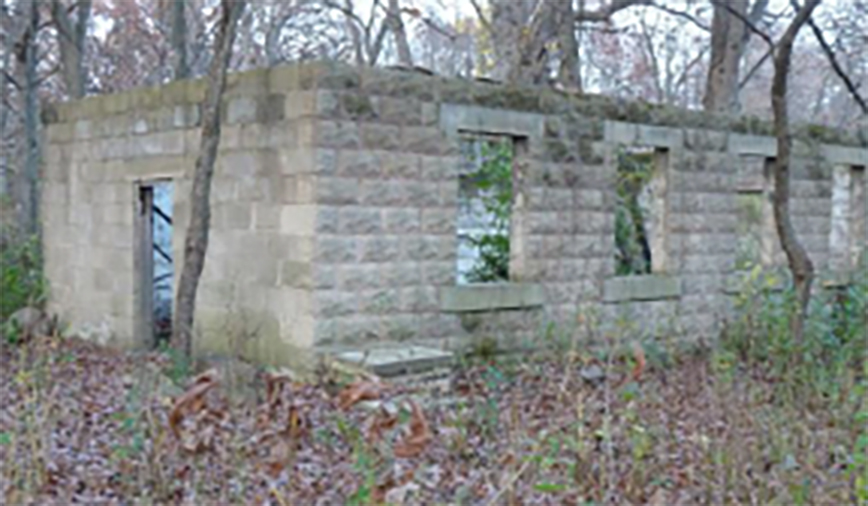Pam’s Perspective
From the…
Pam Otto is the Manager of Natural Programs and Interpretive Services for the St. Charles Park District
November 9, 2012
The Hickory Knolls Natural Area contains some of the most ecologically diverse terrain within the St. Charles Park District. Woodlands, wetlands, prairies–including a rare hill prairie–make up these 130 acres just west of the Discovery Center and are home to more plant and animal species than you can shake a lichen-crusted oaken stick at.
Plants too rare to name flourish alongside more common but equally remarkable species like marsh marigold and bloodroot, leadplant and the Silphium quadruplets, compass plant, prairie dock, rosinweed and cup plant.
Such floral diversity brings equally wide-ranging faunal associations–spring peepers, eastern screech owls, red fox, 13-lined ground squirrels, robust populations of tree swallows and eastern bluebirds and maybe, at one time…monkeys.
No, we don’t have a jungle of trees or the balmy climate we think of monkeys as preferring. But we do, tucked around a bend in a trail, have the remains of a concrete-block building that for as long as anyone can remember has been referred to as the Monkey House.
Its roof and windows are long gone, as are its doors—the openings for which are shorter and narrower than average. Its floor, buried under years of leaf litter and other forest debris has given rise to two buckthorn trees. Beverage cans and other assorted rubble are strewn about, and one hollow nook very recently housed a colony of yellowjackets. Ow.
But the building’s walls still stand strong. If only they could talk.
Since they insist on maintaining their stony silence, I’ve instead opted for chatting with several people over the past few years, hoping one or another could shed light on this building’s unusual name. Although some have memories of playing in it as kids, or working for the Illinois
Youth Corrections facility next door, no one had any recollection of seeing the building in use.
So I decided to do a little digging, though not in the building itself. (Again, those yellowjackets. Inactive though they may be, I’d prefer to avoid another encounter.)
Instead I visited the online Illinois Digital Archives (www.idaillinois.org), a treasure trove of historical documents relating all sorts of tales about our great state. Because much of what is now the Natural Area once belonged to the IYC, or “boys’ home,” as it is still often referred to today, I focused my search by using the facility’s former formal name, the St. Charles School for Boys.
Lo and behold, the web site has a number of reports, book excerpts and newspaper clippings dating from the early 1900s up through the mid 1930s that detail the happenings at the school.
When it was founded in the early 1900s, facility’s goal was rehabilitation of “neglected, dependent and delinquent” youth. The process included academics, vocational training and plenty of exposure to open spaces and fresh air, all under the watchful eyes of instructors, houseparents and other facility staff.
As a reward for good behavior, the residents had several choices for leisure activities—athletics including baseball and track; fishing in a large pond dug by the boys themselves; a stay in a rustic “Lincoln Log Cabin;” or a visit with the zoo animals.
According to a 1926 publication about the home, the “zoo” contained two bears, four foxes, a wolf, “may other small animals” and…drum roll please…two monkeys.
Aha!
Could this be the origination of the name of the abandoned structure we call the Monkey House?
Just as anthropologists have searched for years for the “missing link” between wild primates and humans, that’s the stage we’re at now with our research. We have it in writing that monkeys were kept at the boys’ home, and we have a building colloquially termed the Monkey House. What we’re missing is a connection between these two facts.
Readers, here’s your chance to help out! Many of you have chimed in in the past with your observations and remembrances of things past. Do you, or anyone you know, happen to have some solid evidence of where those monkeys may have been housed? Or, alternately, might you know of what the structure in our Natural Area was used for, if it wasn’t for housing monkeys?
Any light you could shed on this cultural history mystery would be greatly appreciated.
If you’d like to take a look at the building itself, feel free to stop by Hickory Knolls and pick up a trail map. Our front desk staff would be glad to provide further directions, and maybe even walk you out to where the building stands. That is, if we’re not too busy…monkeying around…
Pam Otto is the manager of nature programs and interpretive services for the St. Charles Park District. She can be reached at 630-513-4346 or potto@stcparks.org.

